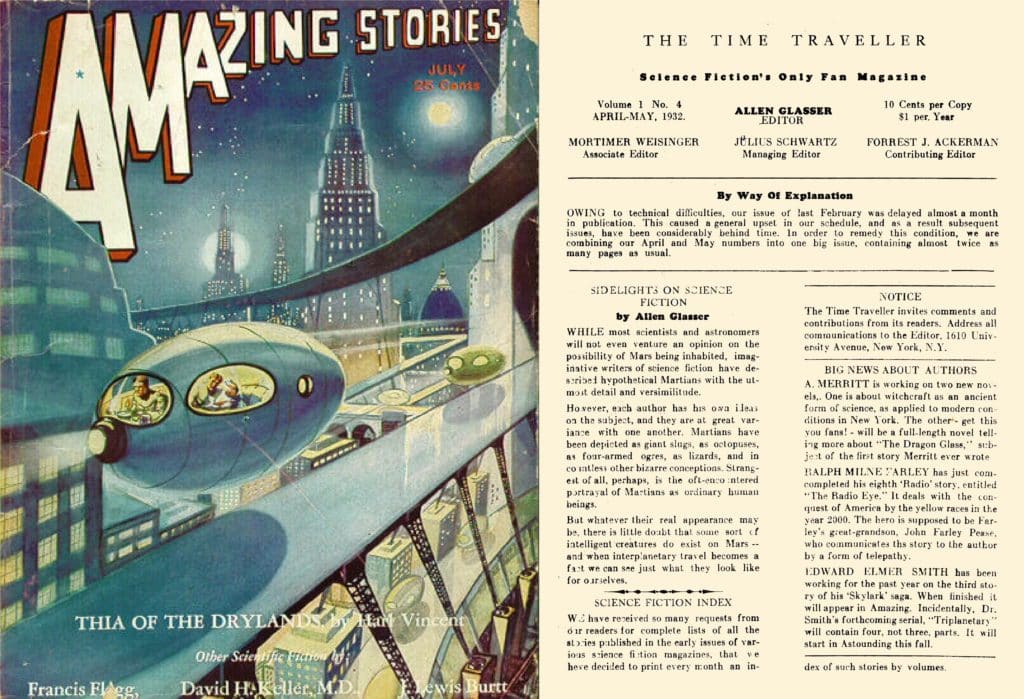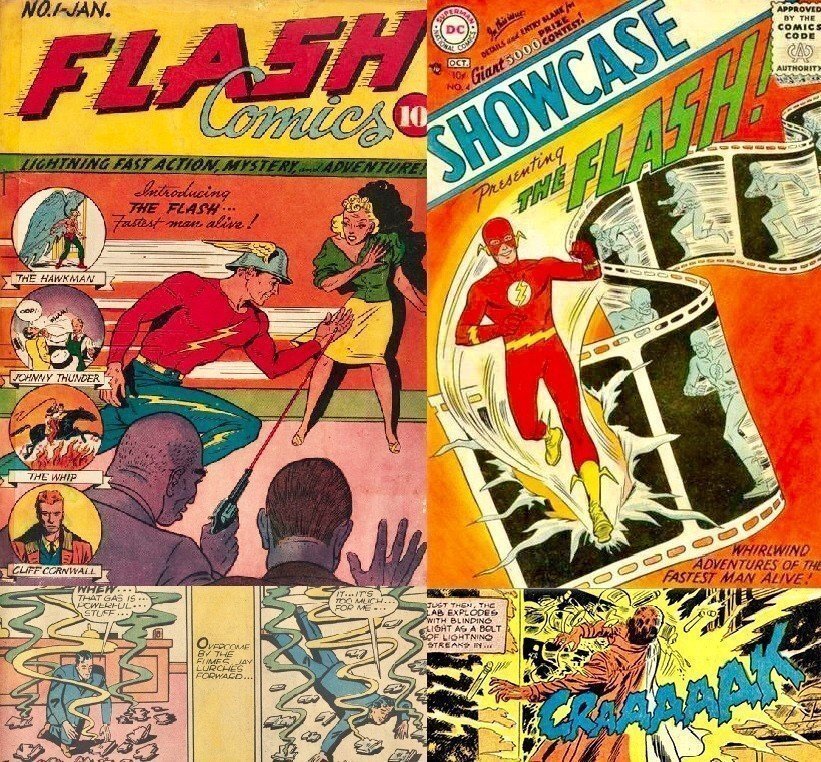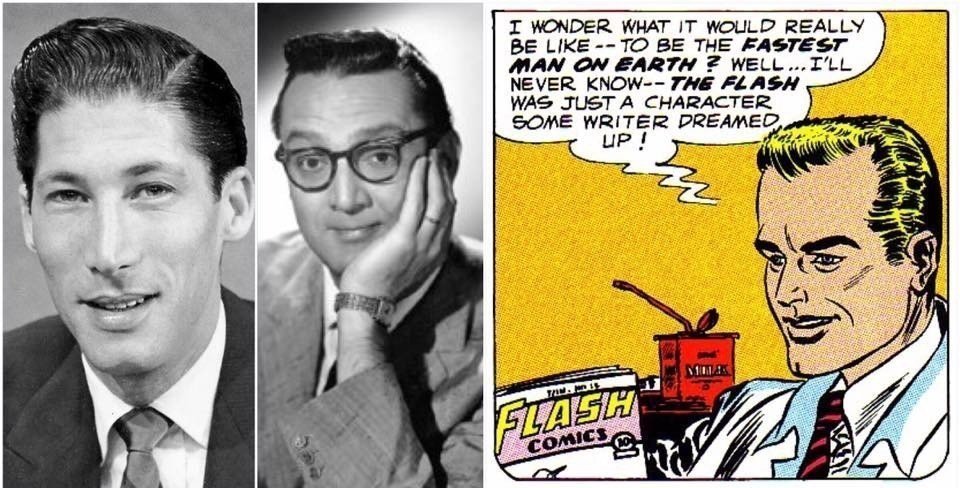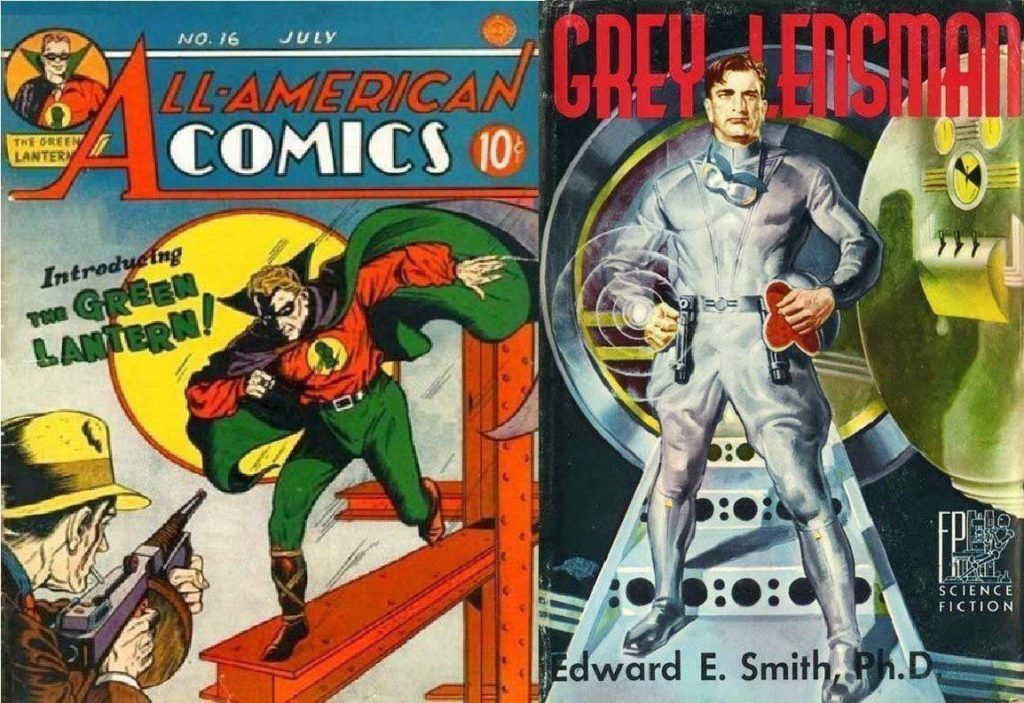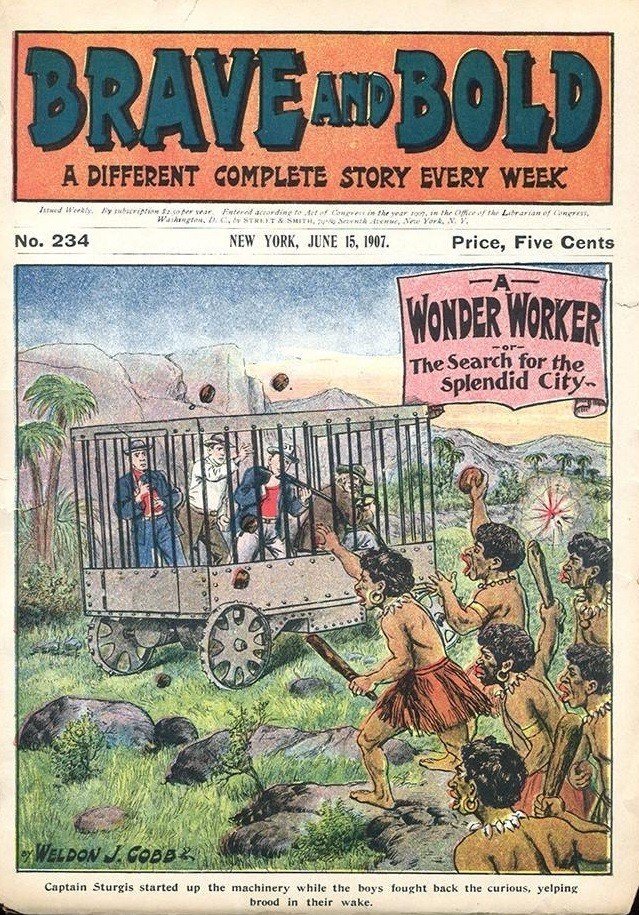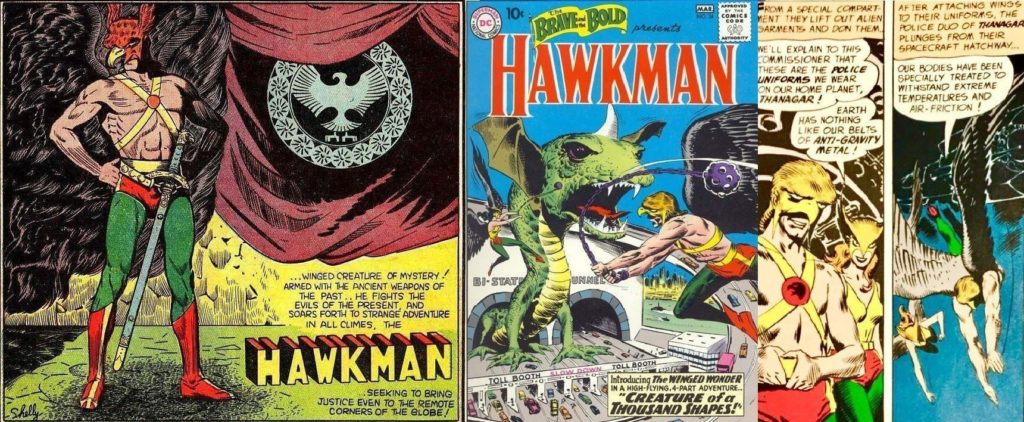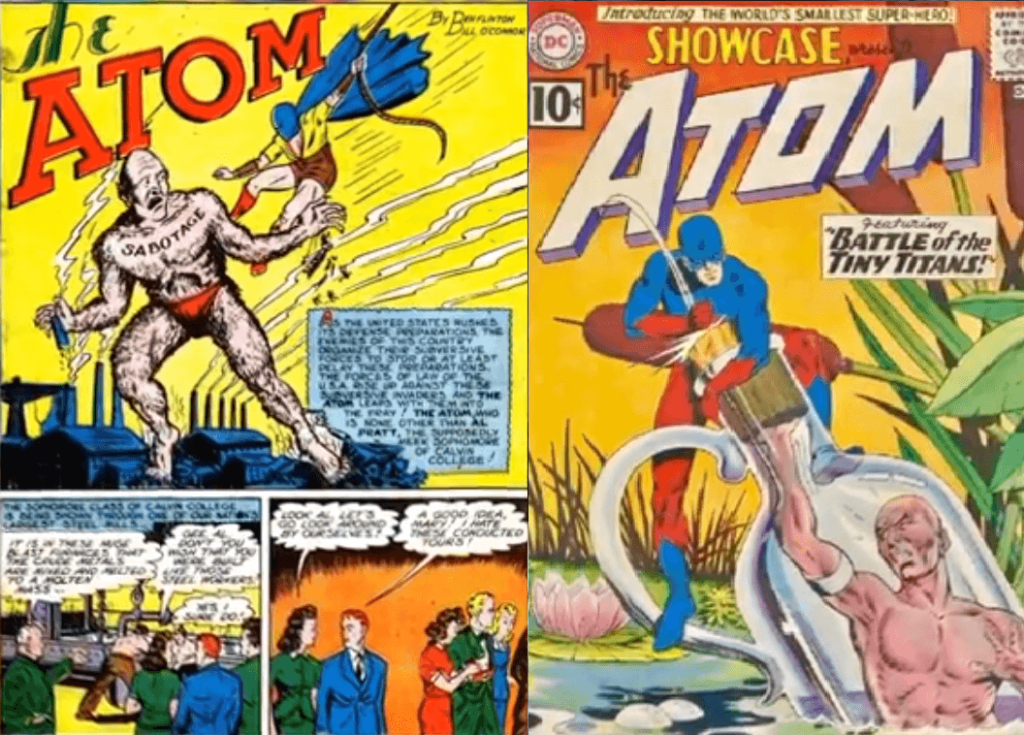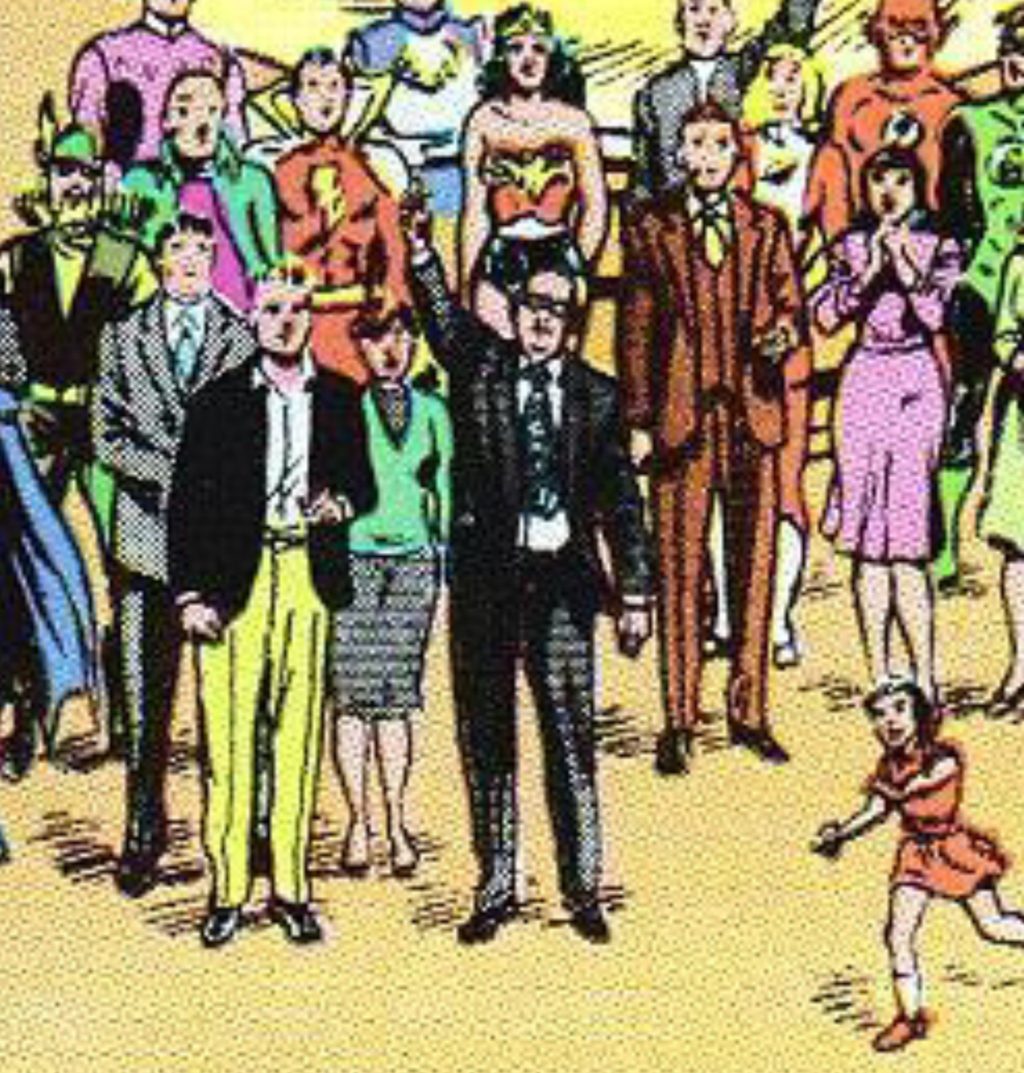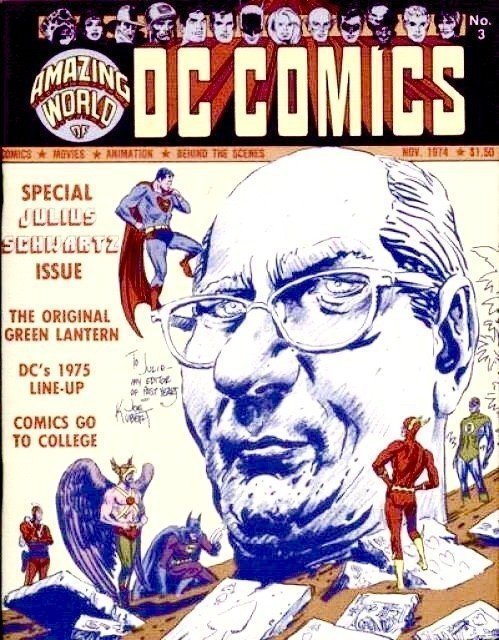Julius Schwartz – Co-Creator of the DC Universe by Alex Grand
Read Alex Grand’s Understanding Superhero Comic Books published by McFarland Books in 2023 with Foreword by Jim Steranko with editorial reviews by comic book professionals, Jim Shooter, Tom Palmer, Tom DeFalco, Danny Fingeroth, Alex Segura, Carl Potts, Guy Dorian Sr. and more.
In the meantime enjoy the show:
Please read article and/or Click to watch video:
Hello and welcome to another episode of Comic Book Historians.
Today we are focusing on Julius Schwartz and what he brought to DC Comics, and comic books in general as one of the key 20th century Comic Book historical figures. To understand Julius Schwartz, we must go farther back to examine his science fiction idol, Hugo Gernsback.
Hugo Gernsback is thought to have created the first pulp magazines purely devoted to Science Fiction in 1926 called Amazing Stories, and another called Science Wonder Stories. To help elaborate on his vision, he discovered architect, Frank R Paul, for his cover and interior illustrations. There were many golden age comic artists who were inspired by these images, notably Jerry Siegel, Jack Kirby, Mort Weisinger and Julius Schwartz. Amazing Stories printed full addresses of the fans who wrote letters to the editor, and these fans would then mail and write to each other. As these fans are able to contact each other and start fan magazines (fanzines), three notable fanboys are Julius Schwartz, Mort Weisinger and Forrest Ackerman who wrote their fanzine The Time Traveler in 1932.
This meeting of the minds over sci-fi would then establish what they, especially Julius Schwartz would later bring to comics. In the meantime, Schwartz and Weisinger represented Pulp writers from 1934-1944, and during this time Schwartz organized the first World Sci Fi Convention in 1939. In 1944 he became editor at All=American Comics which was purchased by Dc Comics, at which he was an editor at National/DC comics.
Schwartz excelled at writing Comics of a sci-fi nature. When EC comics printed sci-fi, Schwartz pushed the sci-fi genre and edited these two sci-fi comics dated 1950 and 1951. Schwartz would pick and choose from these early science fiction concepts as he created and plotted characters and stories as editor.
To get a sense of the environment in which Schwartz would plot or create characetrs, its important to understand some of the moving parts. Superman TV show was a hit & Mort Weisinger put Otto Binder to work after National had Fawcett stop using the Shazam character in 1954. Superman’s Pal Jimmy Olsen 1, 1954 by Binder/Swan was a major success, and with those Shazam superhero concepts with Swan’s clean look, that started some momentum for a Silver Age look at DC which no one else was doing at the time. However, its success would be overshadowed by the dawn of the superhero Silver Age which started with Showcase 4, 1956.
It’s all a gradient so isolating one event may be an oversimplification. Also, with the comics code authority, horror, crime and romance couldnt get as down and dirty as they could so those genre’s couldn’t sell well.
However, Julius Schwartz, a man of science fiction pushes the science fiction event as a starter for Superheroes, putting together Broome and Infantino to come up with a great design and story to create superhero’s from bizarre science fiction events, which was interesting enough for readers to buy issues that thrives under the comics code. Although there was a golden age Flash for all American comics, Powers from sci-fi were a major hallmark of the Silver Age (of superheroes) and lighting mixed with chemicals was likely much more plausible than hard water inhalation which was the 1940 storyline.
Carmine Infantino has said that in 1956, Julius Schwartz, Editor at DC generated the Silver Age Flash’s name, Barry Allen from the first and last names of Talk Show host’s Barry Gray and Steve Allen.
Super beings have been depicted as far back as early mythology. Mercury is very special because he seems to be a synthesis of Super without being all powerful, an interesting Roman God with limits. He is present in comics 1910 Little Nemo by McCay, 1940 Flash by Moldoff, 1941 Mercury by Kirby and 1956 Flash by Infantino, and others.
There is a symbolism with this messenger of great and more powerful things to come that continues to fascinate humans. Well that is certainly the case here, because this fleet footed Superher under Schwartz, in Showcase 4, 1956 emerged with an all-new Flash based on a normal guy given powers under a random science fiction event and that formula, spearheaded by Julius Schwartz proved financially successful and suddenly the comic book industry knew to create more new characters under that same context. This sci-fi superhero revival would be called the “Silver Age.”
Julius Schwartz would push the science fiction angle of Flash to whole new heights in Flash 123, 1961 when he, Gardner Fox, and Carmine Infantino introduced the idea of a multiverse through an Earth 2, where there were other vibratory frequencies of other parallel universes, that could be traveled to through the correct science quantum mechanical mechanisms.
However, although Flash was the prototype by Schwartz that broke the mold for the popular sci-fi superhero comic formula, he also applied that formula to the Golden Age Green Lantern by introducing concepts from The Lensman pulp series which started 1934 by Edward Smith, Ph.D & took comic book science fiction to a whole other level. This 1930s story was about a Galactic Patrol, with each member worthy of a Lens attached to their hand, capable of transmitting energy and translating interstellar languages. Their mission was to defend civilization which sounds like the Green Lantern Corp.
In 1959, Julius Schwartz created the new Green Lantern and his Green Lantern corp, as a sci fi hero named Hal Jordan, and with his ring, and will power, acts as part of a galactic patrol or Corps, overseen by the Guardians of the Universe.
In 1962, editor Julius Schwartz, writer John Broome and inker Joe Giella made this fun 1962 cross-over that combined Green Lantern and Flash. Gil Kane penciled Green Lantern & Carmine Infantino penciled Flash. This was their first pairing outside of the JLA. Still only 12 cents.
it’s these type of cross-comic teamups that we are still seeing in the CW Green Arrow and Flash TV crossovers.
Editor Julius Schwartz had an idea of the first man in space named Adam Strange. Murphy Anderson designed the character in a rejected cover.
Please read article and/or Click to watch video:
Gil Kane drew the approved cover for Showcase 17, 1958 & Mike Sekowsky penciled the interior. Interior penciling changed to Carmine Infantino in Mystery in Space 53, 1959 and he finally had Murphy Anderson return to the character to ink in issue 57, 1960.
G.B. Love started the Rocket Blast Fanzine in 1961 out of a fan interaction with Julius Schwartz shown in Mystery in Space 72 letters page. This fanzine merged with Jerry Bails’ Comic Collector fanzine in 1964, and during this time, fan’s started to merge and organize the first official comic conventions creating New York Comic Con and the Detroit Triple Fan Fair in 1964. Julius Schwartz was a science fiction fan that grew from a similar nucleus in the 1930s so it is fitting that he inspired this next generation along into what later became modern comic book fandom.
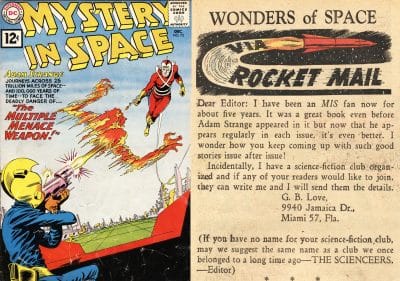
Julius Schwartz was also the editor who oversaw and pushed the formation of the Justice League of America with writer Gardner Fox and artist Mike Sekowsky in Brave and the Bold 28, 1960 as a reinvigoration of the golden age justice society concept, with a glorious assembly of our favorite superheroes, fighting off an alien invasion by Starro, yet another sci-fi concept.
This type of team up based on pre- existing solo characters crossing over to multiply into a brand superhero sci fi group is the same technique used by the Avengers films.
It’s also fitting that the JLA would premiere in the comic Brave and the Bold considering that is the name for a pulp from much earlier in the 20th century. Thanks to my friend Robert Beerbohm for this precursor:
Under Julius Schwartz, Gardner Fox and Joe Kubert reinvent/reboot Hawkman for the Sci-Fi Silver Age in Brave & the Bold 34, 1961. Instead of the 1940s reincarnating Egyptian prince and princess, Hawkman and Hawkgirl were now science fiction alien cops from the planet Thanagar hunting down a shape changing intergalactic criminal.
Showcase 34, 1961. The issue that started the “Silver Age” of DC’s Atom in their Silver Age of Superheroes was also created with Gil Kane/Murphy Anderson cover, under Julius Schwartz supervision and pioneering efforts.
By 1964, Julius Schwartz had earned a reputation of DC’s creative golden goose, and as Batman was spiraling into unprofitability under Editor Jack Schiff and Bob Kane/Sheldon Moldoff. Irwin Donenfeld fired Schiff from Batman and gave it to Schwartz & Infantino to revitalize, creating the “New Look.”
Julius Schwartz, who was a big believer in interacting with fans in letters pages like Gernsback did to him in the 1930s, and revealed that Bill Finger had done a lot of the old Batman stories in Det 327’s text which added more salt in Bob Kane’s damaged pride.
This team gave up Adam Strange to Jack Schiff which ruined the character. That is evident in comparing covers between Schwartz’ last issue on the left and Schiff’s first issue on the right.
Eventually in just a few issues, the book was so low selling that Schiff dropped Adam Strange entirely from the comic book by issue 103, 1965.
1971, Schwartz took over as editor of the Superman books after Mort Weisinger left with Superman 231, 1970 and the books became more character driven, rather than based on gimmicks.
1986, after the Crisis on Infinite Earths reboot, Julius Schwartz (a key Silver Age originator) left DC as Editor of the Superman books and Curt Swan (Silver Age artist) left as penciler. Their last two books were written by Alan Moore in “Whatever happened to the Man of Tomorrow?” This is beautiful, because as we say goodbye to old Superman before John Byrne takes over, we see the cover with Julius Schwartz waving good bye to all the fans.
To say that Julius Schwartz was only an editor is an incredible under statement, through the influence of Hugo Gernsback, and his love of science fiction and logic, he transformed DC Comics and helped bring it into the 21st century with concepts that he had read in early 20th century science fiction pulps and books.
By doing that, he is one of the grandfather co-creators of the DC Universe, and wouldn’t have as rich or as successful of a DC Comics line without him. Cheers.
join us for more discussion at our Facebook group
get historic comic CBH Merchandise
check out our CBH Youtube Channel
check out our CBH Podcast available on Apple Podcasts, Google PlayerFM and Stitcher.
Use of images are not intended to infringe on copyright, but merely used for academic purpose.
Flash ©DC Comics, Photos ©Their Respective Copyright Holders, Amazing Stories ©The Experimenter Publishing Company and Steve Davidson, All-American Comics ©DC Comics, Strange Adventures ©DC Comics, Mystery In Space ©DC Comics, Superman’s Pal Jimmy Olsen ©DC Comics, Showcase ©DC Comics, Little Nemo Sample©Sunday Press , Captain America Comics ©Timely Comics, Journey Into Mystery ©Marvel Comics, Fantastic Four ©Marvel Comics, Hulk ©Marvel Comics, Amazing Fantasy ©Marvel Comics, Tales of Suspense ©Marvel Comics, Green Lantern ©DC Comics, Grey Lensman ©Fantasy Press 1951, Flash/Green Arrow TV Series ©Warner Brothers on CW, The Amazing World of DC Comics ©DC Comics, Action Comics ©DC Comics, Superman ©DC Comics, Justice League of America ©DC Comics, Avengers Film ©Marvel Studios, Hawkman ©DC Comics, Crime Doesn’t Pay – Public Domain, Young Romance – Public Domain, Black Magic – Public Domain











